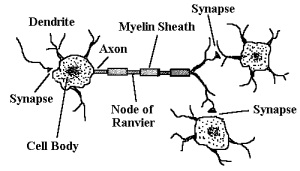

This could trigger for demyelination neurodegenerative diseases
By: Stefan Anitei, Science Editor
Scientists have discovered a key protein, named Par-3, involved in the formation of the myelin, protective white sheath that wraps the long extensions of the neurons, the axons.
The new discovery could be useful in the treatment of degenerating neuronal diseases that result in demyelination, such as multiple sclerosis, transverse myelitis and others. Myelin, found mostly on the rapid transmitting neurons' axons, is an electrically insulating phospholipid that speeds neuronal impulses and allows long-distance communication in the nervous system.
Axons without myelin transmit the impulses in waves, but those myelinated propagate them by hops (“saltation”), because myelin sheaths, secreted around Schwann cells present cutoffs (called Ranvier nodes), where the limits of these cells are situated, and the impulse jumps from one myelin stretch to another when they encounter a Ranvier node.
Myelin increases resistance by a factor of 5,000 and decreases capacitance by a factor of 50. The axons are like wires that transmit information, encoding our sensations, thoughts, feelings, and actions in electrical signals. Grouped axons form nerve fibers, that's why the nerves are white; the white substance of the brain is due to myelin also (while the gray substance represents the neuronal body cells).
The new study found that Par-3 is a key element of the myelination process. This protein acts like a molecular scaffold to set-up an "organizing center", which brings together proteins essential for myelination, in particular a receptor protein for a molecule secreted by the neurons. Disrupting the formation or function of the organizing center leads to abnormalities in myelin formation.
New studies should identify the other components of the organizing center set-up by Par-3.